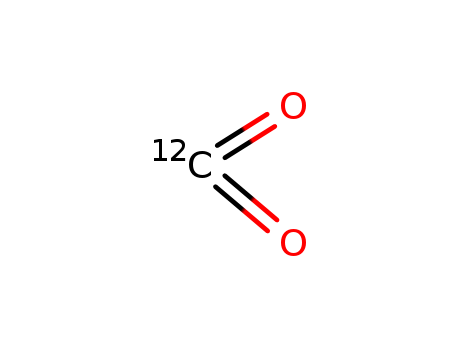10.1515/znb-2011-0209
The research fouse on the reactions between carbon dioxide (CO2) and various organic bases, specifically diamines. The purpose of this study is to understand and detail the products formed when diamines react with CO2, which is relevant for capturing carbon dioxide, a greenhouse gas. The research concludes that the reactions lead to the formation of zwitterionic carbamates, which are stable compounds resulting from the interaction between the diamines and CO2. The study also provides insights into the crystal structures of these products, revealing the presence of strong intermolecular hydrogen bonds and the formation of extended networks in the compounds. Key chemicals used in the process include diamines such as 1,2-diaminoethan, 1,3-diaminopropan, and N,N,N′-trimethylethylendiamin, along with carbon dioxide (CO2).
10.1016/S0040-4039(00)85262-4
The study presents a novel and selective method for the deoxygenation of phenols through the reduction of aryl triflates. The key chemicals involved are aryl triflates, which are the substrates to be reduced; triethylammonium formate, which acts as the hydrogen donor; and a homogeneous palladium catalyst, typically palladium acetate, which facilitates the reaction. Triethylamine is also used as a base, and phosphine ligands, such as triphenylphosphine or 1,1'-bis(diphenylphosphino)ferrocene (DPPF), are employed to stabilize the palladium catalyst and enhance its activity. The reaction is carried out in DMF solvent, with formic acid added to generate the active hydrogen donor species. The study demonstrates that this method is highly chemoselective, tolerating various functional groups like nitro, ketones, esters, and olefins, and it provides high yields of aromatic hydrocarbons. The mechanism likely involves oxidative addition of the aryl triflate to the palladium catalyst, displacement of the triflate by formate ion, loss of carbon dioxide to form an arylpalladium(II) hydride, and subsequent reductive elimination to yield the aromatic hydrocarbon and regenerate the active palladium species.
10.1016/j.tet.2008.11.034
The study describes a novel method for synthesizing indoles through the reductive cyclization of nitroalkenes using palladium catalysis and carbon monoxide (CO) as a reductant. The researchers utilized nitroalkenes as starting materials, which are versatile intermediates in various synthetic transformations. The palladium catalyst, specifically Pd(OAc)2, along with a ligand such as 1,10-phenanthroline, facilitated the transformation under mild conditions (1 atm CO, 110 °C). The process involves the formation of a nitrosoalkene intermediate, which then rearranges to produce 3-arylindoles in high yields. The study highlights the use of carbon monoxide as an inexpensive and environmentally benign reductant, with carbon dioxide as the primary byproduct. The method was optimized to achieve high efficiency and yield, and it was demonstrated with various substituted nitroalkenes, resulting in the synthesis of different indole derivatives. The study also includes detailed experimental procedures and characterizations of the synthesized compounds, showcasing the scope and potential applications of this new synthetic strategy in the field of heterocyclic chemistry.
10.1038/nchem.1710
The research primarily focuses on investigating the catalytic activity of a novel metal-organic framework (MOF) for the conversion of carbon dioxide into useful chemicals. The experiments involved the synthesis of the MOF using solvothermal methods, with reactants such as metal salts and organic linkers. The synthesized MOF was characterized using X-ray diffraction (XRD) to confirm its crystalline structure, and nitrogen adsorption-desorption isotherms to determine its porosity. The catalytic performance was evaluated under various conditions, including temperature, pressure, and CO2 concentration, using a fixed-bed reactor. The conversion of CO2 and the selectivity towards the desired products were analyzed using gas chromatography (GC) and mass spectrometry (MS). The results provided insights into the MOF's stability and efficiency, paving the way for potential industrial applications in carbon capture and utilization.
10.1002/anie.200801852
The research focuses on the development of a highly active and recyclable catalytic system for the copolymerization of carbon dioxide (CO2) and propylene oxide. The purpose of this study was to improve upon existing catalytic systems, which had limitations in terms of activity, leading to higher catalyst costs and potential toxicity due to metal residue in the resin. A significant conclusion of the research was the ability to separate and recover the catalyst by filtration through a short pad of silica gel, yielding a resin with negligible metal residue (1–2 ppm). The recovered catalyst could be reused without significant loss of performance, which is a crucial step towards the commercialization of CO2/propylene oxide copolymers. The chemicals used in the process included various cobalt–salen complexes, propylene oxide, and silica gel for catalyst recovery.
10.1515/HC.2007.13.2-3.113
The study investigates the reactions of 4-(4-methylbenzoyl)-5-(4-methylphenyl)-2,3-furandione (1) with various semi-/thiosemi-carbazones (2a-h). These reactions result in the formation of l-methylenaminopyrimidine-2-one and -thione derivatives (3a-h) through the loss of carbon dioxide and water, with yields ranging from 43% to 59%. The newly synthesized compounds were characterized using elemental analyses, IR, 'H and 13C NMR spectral data. The study also explores the hydrolysis of specific compounds, 5-(4-methylbenzoyl)-1-(methyl-4-methylphenylmethylenamino)-4-(4-methylphenyl)-1//-pyrimidine-2-one (3c) and 5-(4-methylbenzoyl)-4-(4-methylphenyl)-1-(phenylmethylenamino)-1//-pyrimidine-2-thione (3h), leading to the formation of 1-amino-5-(4-methylbenzoyl)-4-(4-methylphenyl)-1//-pyrimidine-2-one (4) and 1-amino-5-(4-methylbenzoyl)-4-(4-methylphenyl)-1//-pyrimidine-2-thione (5). The aim of the study is to contribute to the understanding of this class of heterocyclic compounds, which have significant biological and medical interest due to their potential applications in treating various diseases.





